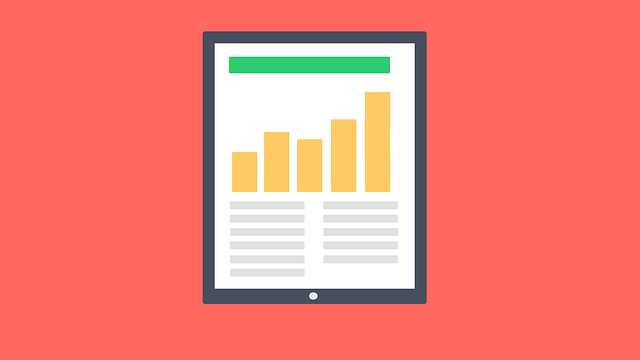In today's digital landscape, establishing an online presence is essential, not just a luxury. Cost-effective web solutions have democratized access to high-quality web design by offering affordable services without compromising quality. These solutions empower small businesses and startups through robust platforms with essential features like responsive layouts and SEO basics, allowing them to compete effectively in the digital economy. By leveraging open-source CMS platforms, minimalistic design philosophies, outsourcing non-core tasks, and strategically optimizing content, businesses can create valuable, cost-efficient websites that enhance user engagement and drive organic traffic. The choice between outsourcing and managing projects in-house depends on project size and complexity, but both strategies offer viable paths to achieving affordable web design success.
In today’s digital landscape, a strong online presence is crucial, yet traditional web development can be cost prohibitive. This article explores affordable web design solutions for businesses seeking a cost-effective digital solution without sacrificing quality. From leveraging open-source platforms to content optimization strategies and outsourcing options, we uncover the secrets to unlocking an engaging online presence on any budget. Discover how you can create a powerful and accessible website that drives results without breaking the bank.
Understanding Cost-Effective Web Solutions: Unlocking Affordable Digital Presence

In today’s digital landscape, having an online presence is no longer a luxury but a necessity for businesses and individuals alike. Cost-effective web solutions bridge the gap between aspiring digital pioneers and their goals by offering affordable web design services that don’t compromise quality. These solutions are designed to provide a robust online platform without breaking the bank, ensuring accessibility to a broader audience who may have been deterred by the traditionally high costs of entering the digital realm.
Unlocking affordable digital presence is about more than just reducing financial barriers; it’s about democratizing access to the internet. Cost-effective web design packages often include essential features such as responsive layouts, user-friendly interfaces, and search engine optimization basics, enabling businesses to compete in the online space effectively. This approach not only fosters innovation but also encourages small enterprises and startups to thrive in a digital economy that has historically been dominated by larger corporations with substantial resources.
The Evolving Landscape of Web Design Costs: Trends and Expectations

In recent years, the landscape of web design costs has undergone a significant transformation, driven by technological advancements and shifting market expectations. Traditional, expensive bespoke designs are giving way to more affordable web design options that still deliver high-quality, functional websites. This shift is largely due to increased competition among designers and developers, as well as the rising availability of user-friendly, drag-and-drop website builders that democratize access to digital creation.
Today’s clients expect more than ever before from their online presence—sophisticated design, seamless functionality, and optimal performance across all devices. To meet these expectations while keeping costs down, web designers are adopting efficient workflows, leveraging pre-built templates, and utilizing cost-effective technologies like HTML5, CSS3, and JavaScript. Additionally, the rise of cloud-based hosting and content delivery networks (CDNs) has significantly reduced website maintenance costs, making affordable web design a reality for businesses of all sizes.
Strategies for Delivering High-Quality Websites on a Limited Budget

Creating high-quality websites at an affordable price is now more accessible than ever, even on a limited budget. One effective strategy is leveraging open-source content management systems (CMS) like WordPress or Drupal. These platforms offer extensive customization capabilities and a vast library of free themes and plugins, reducing the need for expensive design work. Additionally, focusing on a clean, minimalistic design approach can significantly lower costs by simplifying development efforts.
Another key tactic is to prioritize functionality over flashy aesthetics. By identifying essential features required for the website’s purpose and cutting non-essential bells and whistles, developers can streamline the build process. Furthermore, outsourcing non-core tasks like content creation or search engine optimization (SEO) to freelance specialists can save money while ensuring these crucial aspects are covered professionally.
Open-Source Platforms: A Powerful Tool for Cutting Web Development Expenses

Open-source platforms have revolutionized the way we approach web development, offering a cost-effective alternative to traditional proprietary software. These platforms provide developers and businesses with a powerful toolkit to build and manage websites without incurring substantial expenses. By utilizing open-source tools, affordable web design becomes not just an option but a reality for startups and small businesses.
One of the key benefits is accessibility; these platforms are freely available, eliminating licensing fees. Additionally, open-source communities contribute their time and expertise to create robust, feature-rich solutions, ensuring high-quality outcomes. This collaborative environment fosters continuous improvement, allowing developers to build upon existing projects, save time, and reduce overall development costs for web design services.
Content is King: Optimizing Your Site to Reduce Long-Term Costs

In the realm of cost-effective web solutions, it’s crucial to recognize that content is the cornerstone of a successful online presence. When crafting or revamping your website, prioritizing quality and relevant content can significantly reduce long-term costs. An affordable web design isn’t just about minimizing initial expenses; it’s an investment in attracting and retaining users. By optimizing your site with valuable, engaging content, you increase user engagement, improve search engine rankings, and drive organic traffic.
This strategic approach ensures that your website remains relevant and competitive over time, reducing the need for frequent redesigns or costly updates. Effective content optimization includes a mix of well-researched keywords, compelling copy, and visually appealing media. It’s about telling a brand story that resonates with your target audience, fostering trust, and encouraging user interaction. As a result, you’ll not only save on design and development costs but also build a sustainable online asset.
Outsourcing vs. In-House: Finding the Right Balance for Your Project

When considering cost-effective web solutions, one key decision is whether to outsource or keep the project in-house. Outsourcing affordable web design can be a strategic move, especially for businesses with tight budgets or specific expertise needs. It allows access to skilled professionals worldwide, offering flexibility and cost savings. However, it’s essential to maintain control over the project’s scope and quality, which may require additional communication efforts.
In-house solutions, on the other hand, provide direct oversight but can be more expensive. Building a dedicated team or outsourcing long-term ensures consistency in design and development. It also fosters better collaboration within your organization. Finding a balance is crucial; for smaller, more straightforward projects, an external affordable web design service might be ideal. For complex, ongoing needs, an internal team could offer the best results, albeit with a higher investment.
Case Studies: Success Stories of Cost-Effective Web Implementation

In the competitive digital landscape, many businesses have realized that a strong online presence is not just beneficial but essential. However, the notion that creating and maintaining a website is an expensive endeavor still persists. This is where case studies of cost-effective web implementation come into play, serving as shining examples of how businesses can achieve remarkable results without breaking the bank. By adopting affordable web design strategies, companies have successfully launched and grown their online platforms, defying the stereotype that digital success requires substantial financial resources.
These success stories highlight various approaches, such as leveraging open-source tools, utilizing ready-made templates, outsourcing to freelance designers, and implementing simple yet effective website structures. Through these methods, organizations have been able to create professional-looking websites that enhance user experience while keeping costs low. By drawing insights from these case studies, aspiring digital entrepreneurs and established businesses alike can navigate the web development process with a more economical mindset, ensuring they get the most value for their investment.
